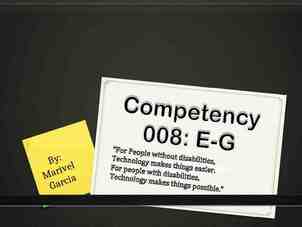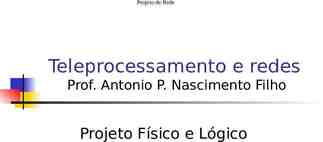GPOS Table
27 Slides1.08 MB

GPOS Table

GPOS Table Provides precise control over glyph placement Used for sophisticated text layout and rendering

Gpos Table Examples Vietnamese Urdu: connection on a descending diagonal line

Placement Placement information is in two directions, X offset to the right, and Y offset down.

Placement (cont’d) Glyphs are positioned in pairs Position information is kept in pair kerning tables. The tables do not contain complete information of glyph pairing Contexts of more than 2 glyphs are not handled.

Placement (cont’d) Kerning is improved by independent placement data

Attachments Glyphs contain multiple attachment points For space saving, glyphs are associated with classes of the same attachment points Attachment points are useful for cursive scripts connection Entry and exit points marked on contextual Urdu glyph variations

Attachments (cont’d) GPOS supports 7 types of attachments A single adjustment positions one glyph, such as a superscripts or subscript – A pair adjustment positions two glyphs with respect to one another. e.g. Kerning – A cursive attachment describes cursive scripts and other glyphs that are connected with attachment points when rendered –

Attachments (cont’d) A MarkToBase attachment positions combining marks with respect to base glyphs, as when positioning vowels, diacritical marks, or tone marks in Arabic, Hebrew, and Vietnamese. – A MarkToLigature attachment positions combining marks with respect to ligature glyphs. Because ligatures may have multiple points for attaching marks, the font developer needs to associate each mark with one of the ligature glyph’s components. –

Attachments (cont’d) – A MarkToMark attachment positions one mark relative to another, as when positioning tone marks with respect to vowel diacritical marks in Vietnamese

Attachments (cont’d) – Contextual positioning describes how to position one or more glyphs in context, within an identifiable sequence of specific glyphs, glyph classes, or varied sets of glyphs. One or more positioning operations may be performed on “input” context sequences. Contextual positioning lowered the accent over a vowel glyph that followed an overhanging uppercase glyph

GPOS Contents GPOS Table header contains 3 Lists Script List – Feature List – Lookup List –

Sponsored by:

Baseline Table Provides information used to align glyphs of different scripts and sizes in one line Provides minimum and maximum extent values for each script Example of the problem: Incorrect alignment of glyphs from Latin and Kanji (Latin dominant)

Baseline Table (cont’d) Example of the solution: Proper alignment of glyphs from Latin and Kanji (Latin dominant)

Baseline Table (cont’d) Uses a “dominant run” of glyphs to determine the default baseline position Other baselines are defined in relation to the default Different faces will align to a different baseline appropriately

Baseline Table (cont’d) Baseline values are a recomendation and can be ignored by the client Comparing Latin and Kanji baselines, with characters aligned according to dominant run

MicroType A compression technology created by Agfa Designed to support outline data and hints Provides uncompromised output quality Uses Compression by Factoring

MicroType Compresses up to 6:1 About 80 Fonts in1MB Examples: – HP Laserjet 4 / 5P 45 Fonts – Standard Postscript 35 Fonts

Compression by Factoring Receives standard typeface as input Eliminates redundant information Shares common data to reduce magnitude A complete factoring of a collection of fonts, yields a size of approximately 20% of the standard TrueType format

MicroType Features Faster The decompression process is identical to the font scaling process, as a result the throughput is 2-4 times faster than that of comparable systems –

MicroType Features cont’d Smaller Depending on the number of typefaces and the specific designs in the font collection, compression ratios are as high as 6:1 –

MicroType Features cont’d More Accurate Since letterforms are produced by extracting information from existing designs, as opposed to generating approximations, highly accurate results are achieved –

MicroType Features (cont’d) Supports Typeface Variety Due to MicroType’s flexible architecture, it easily accommodates any graphic form including diverse typefaces, symbols, and non-Latin faces. –

MicroType Features (cont’d) Uses Trademarked Names The typeface names as they appear in application font menus are the same trademarked names users recognize. Other vendors must use clone fonts with unfamiliar typeface names which can be confusing –

Bibliography Microsoft: http://www.microsoft.com/truetype/web Adobe: http://www.adobe.com Agfa: http://www.agfahome.com This presentation This presentation was NOT was created using CloseType Fonts The background was selected by Roy

Free Pizza for those who stayed






